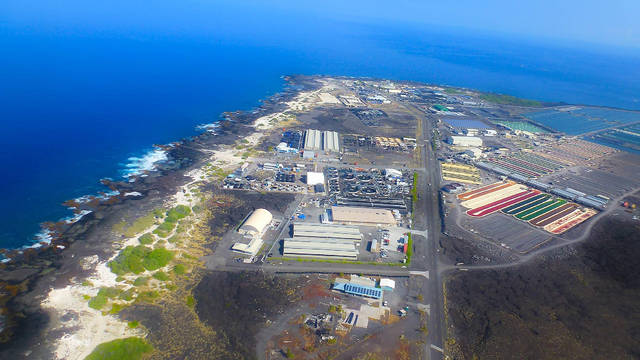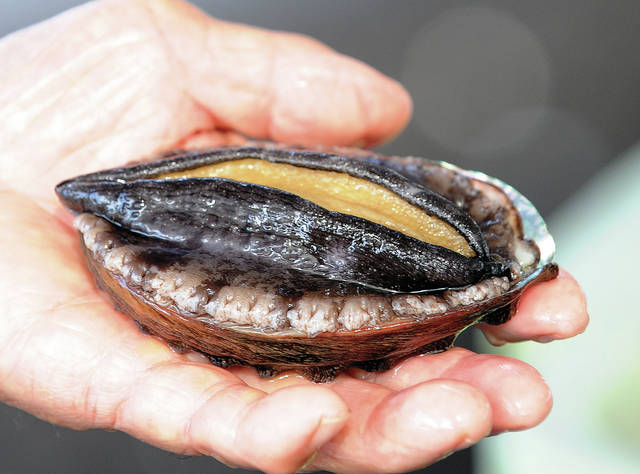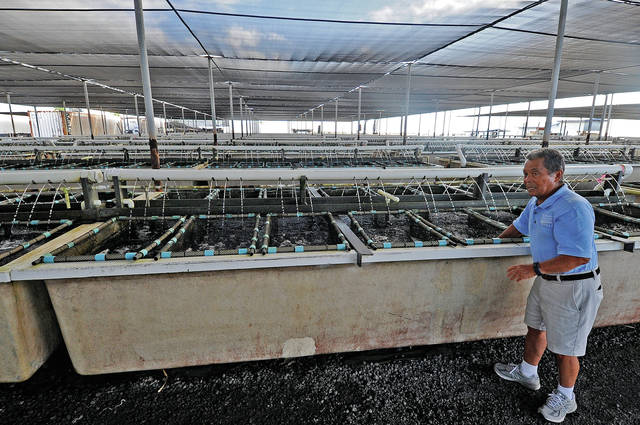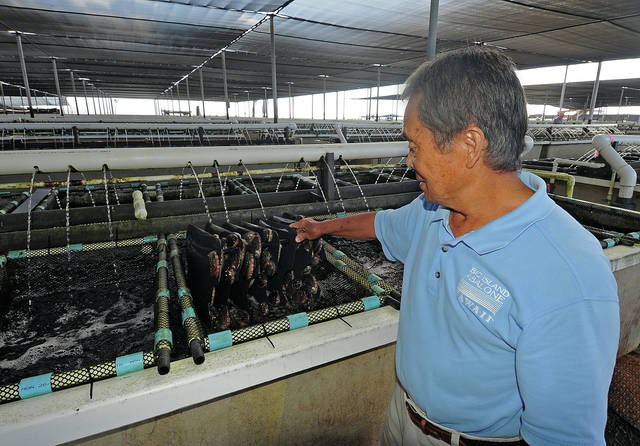State initiates aquaculture accelerator program, investment fund at NELHA




KAILUA-KONA — The state announced Thursday a concrete plan to import big ideas, and potentially big dollars, to West Hawaii through the vehicle of the global aquaculture industry.
KAILUA-KONA — The state announced Thursday a concrete plan to import big ideas, and potentially big dollars, to West Hawaii through the vehicle of the global aquaculture industry.
Capitalizing on Hawaii’s unique access to natural resources in the name of economic diversification, a partnership between multiple state agencies kicked off a process this week to develop an aquaculture accelerator program, along with a complementary investment fund, to be situated at the Natural Energy Laboratory of Hawaii Authority.
ADVERTISING
Karl Fooks, president of the Hawaii Strategic Development Corporation, characterized the move in a press release as “…an effort to demonstrate the state’s commitment to developing Hawaii’s commercial aquaculture industry and to focus entrepreneur and investor interest on Hawaii as a location for globally relevant aquaculture companies.”
The idea is to attract startups in the aquaculture sector offering the promise of innovative concepts and technologies, develop a cohort of companies, then elevate that cohort to a place where investment is viable. Job creation, economic diversification and sustainability are all goals of the project, as well as the development of technical and intellectual property.
Vassilis Syrmos, vice president for Research and Innovation at the University of Hawaii at Manoa, called the initiative unique because it’s the first time multiple state agencies are attempting to create a venture fund for aquaculture projects.
There are potential pitfalls when public institutions intermingle with sources of private money, he added, but a plan to manage possible conflicts of interest was presented and the state Legislature subsequently granted the necessary leeway.
Along with UH-Manoa, partners UH Ventures LLC, HSDC and NELHA recently released a request for information on the Hawaii state government website, the first step in a bidding process that will end with the selection of an entity to manage the venture.
The chosen entity will run the accelerator program while working with the aforementioned partners to raise capital from private investors. Syrmos said the monetary goal of the raise has a floor of $2 million and a ceiling of $20 million.
NELHA will host the accelerator program, which executive director Greg Barbour said partners hope will exist for a minimum of three years and include a cohort of at least 5-10 companies. He added NELHA was the natural choice for the program site as nothing needs to be built.
Along with an investment of $500,000 to help whatever management entity is selected get rolling, NELHA will simply repurpose existing infrastructure for use as part of the accelerator program.
“That’s the beauty of it, everything is already existing from an office, workshop and outdoor space standpoint,” Barbour explained. “And also, we have the ability to pump (warm and cold) seawater already.”
Hiroshi Arai, senior adviser to Big Island Abalone, which currently takes advantage of NELHA infrastructure, touted what the facilities offer.
NELHA provides Big Island Abalone with an abundant, continuous flow of clean water enabling the company to grow premier abalone at its 3-acre site before the product is shipped to Japan and the mainland.
“This is the only place in the world (where this can be done),” Arai said.
Using deep seawater pumped up from 3,000 feet and 100 feet, the company is able to create the perfect environment for the 4 million abalone growing there at any given time. The water source is also unadulterated, ensuring there’s nothing like parasites or barnacles to impact the univalve.
“It’s the best quality in the world,” Arai added.
Given the facilities at NELHA as well as the current and projected global food climate, the accelerator program is an investment the partners see as potentially paying massive dividends.
“People believe the sustainability aspect of global aquaculture will cause it to grow dramatically over the next 50 years,” Barbour said.
Aquaculture has been increasing in protein production steadily for years, he added, and has now surpassed production offered by the wild catch of marine fish, which has remained relatively flat for most of the last two decades.
Barbour said the industry’s efficiency is also a selling point. One gram of protein will equal one gram of seafood while six grams of protein are required to create one gram of beef, according to Barbour.
More attention paid to aquaculture from the federal government, which recently conducted an environmental impact statement for ocean leasing in the Pacific for the first time, has also buoyed the industry’s long-term prospects. And venture capitalists have moved more steadily into the sector over the last few years, Barbour said, which is another sign of significant and long-term potential.
With all signs pointing to a positive, or even necessary, future for aquaculture in the global food market, Syrmos and Barbour both said taking advantage of NELHA facilities and Hawaii’s natural resources is not an opportunity the state can afford to forego.
Over half of the world’s shrimp brood stock comes from NELHA, yet there’s still a capacity to do much more.
Syrmos said the partners are open to all types of innovation and technology, but will keep a keen eye on the shrimp industry because of its global prevalence and successful history at NELHA. But at this stage, no ideas are off the table.
“I don’t think we’re at the forefront (of aquaculture), we’re somewhere in the middle,” said Syrmos, referencing programs in Alaska, Maine and Norway.
“We should be at the forefront. So we’re trying to get in the game and get in front of the wave.”
Barbour added partners hope to select a managing entity by early spring and would like to open the first participating businesses at NELHA come next summer.


